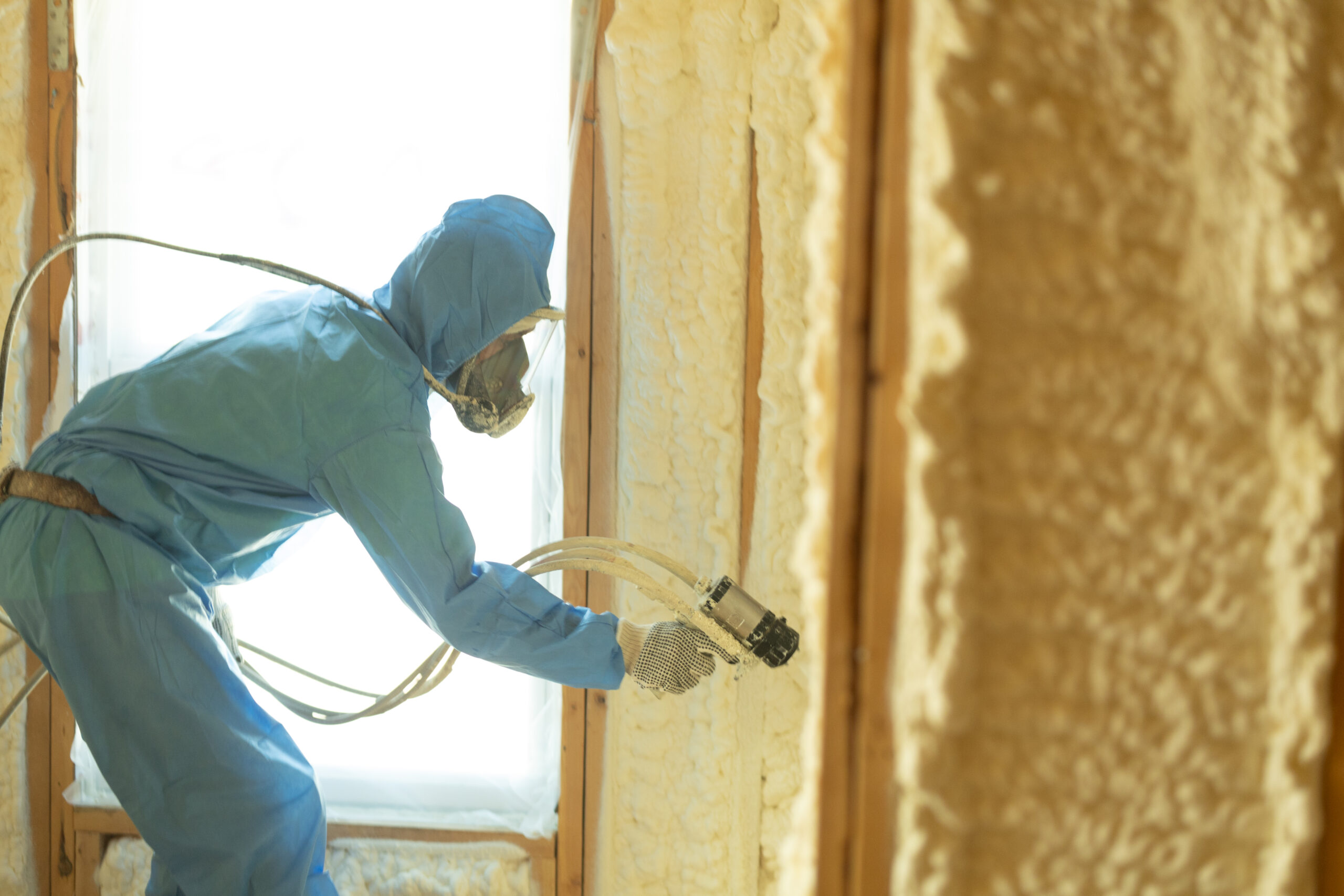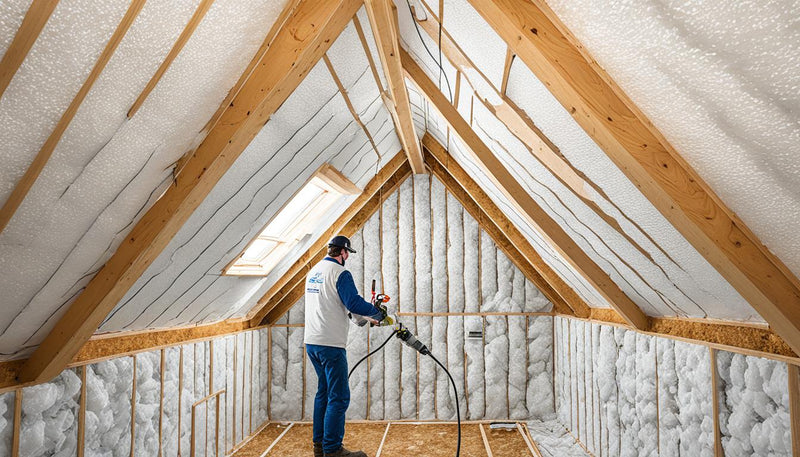Leading Reasons to Select Spray Foam for Your Next Insulation Job
When thinking about insulation alternatives for your next task, spray foam stands out due to its remarkable performance attributes and effectiveness advantages. As you evaluate your choices, exploring the functional applications and long-lasting advantages of spray foam might reveal engaging reasons to incorporate it right into your insulation approach.
Superior Insulation Performance

The high R-value of spray foam, which measures its thermal resistance, is one more vital advantage. Closed-cell spray foam, for circumstances, can attain an R-value of as much as 6.5 per inch, significantly outperforming fiberglass batts and cellulose. Moreover, spray foam insulation develops an airtight seal, which reduces thermal connecting and lowers the potential for mold and mildew development due to moisture accumulation.

Power Performance Advantages
The energy efficiency advantages of spray foam insulation are considerable, more improving its appeal as a leading selection for building insulation. Spray foam broadens upon application, creating a closed seal that reduces air leakages, which is a common source of energy loss in standard insulation materials.
Additionally, spray foam insulation flaunts a high R-value per inch, which suggests it supplies much more thermal resistance in much less space compared to choices like fiberglass or cellulose (Spray Foam). This performance not just contributes to immediate energy savings however additionally promotes lasting sustainability by lowering the total power consumption of a structure
In addition, the application of spray foam can certify house owners for energy performance incentives and tax obligation credit reports, adding economic advantages to its energy-saving abilities. In a period where energy conservation is vital, picking spray foam insulation not only boosts comfort but likewise lines up with ecologically responsible methods, making it a sensible selection for both industrial and household jobs.
Wetness and Mold Resistance
Offered its distinct composition and application approach, spray foam insulation uses remarkable dampness and mold resistance, making it a perfect option for various atmospheres. The closed-cell structure of spray foam develops a solid obstacle that successfully seals off possible wetness access, thus reducing the possibility of mold and mildew growth. Unlike typical insulation products, which can absorb water and give a breeding ground for mold, spray foam remains unsusceptible dampness, improving the total wellness of the interior atmosphere.
In addition, the application process of spray foam includes expanding and filling voids and cracks, ensuring a tight seal that reduces air leaks. This characteristic not only boosts energy efficiency yet additionally aids control humidity degrees within the area. Correct humidity control is vital for protecting against mold and mildew, making spray foam insulation specifically beneficial in areas susceptible to wetness, such as cellars and crawl rooms.
Along with its moisture-resistant buildings, spray foam is also inherently immune to mold development. This particular guarantees that homes and buildings continue to be safe and healthy and balanced over time, supplying assurance to house owners and structure managers alike.
Long-Term Price Financial Savings
Buying spray foam insulation yields substantial long-term price savings, mainly with enhanced energy efficiency. Unlike standard insulation products, spray foam produces an impermeable seal that decreases air leakage. This reduction in drafts results in lower home heating and air conditioning prices, as cooling and heating systems do not need to work as difficult to keep comfortable interior temperature levels.
Additionally, the premium protecting buildings of spray see here foam imply that homes continue to be regularly comfy year-round, decreasing dependence on energy-consuming devices. In time, these cost savings can gather, resulting in this content a noticeable decrease in energy costs.
Furthermore, spray foam insulation adds to the durability of your home's structure by avoiding moisture buildup and mold and mildew development, which can lead to expensive repair services. With its resilience and resistance to settling, spray foam keeps its efficiency for many years, guaranteeing that the first financial investment remains to repay.
Fundamentally, selecting spray foam insulation not only enhances your home's power effectiveness but also converts into substantial long-lasting financial benefits, making it a sensible investment for homeowners wanting to minimize expenses while boosting convenience and sustainability.
Versatile Application Options
Numerous application options make spray foam insulation an extremely versatile selection for a variety of building tasks (Spray Foam). This adaptability allows it to be effectively made use of in domestic, industrial, and commercial settings, accommodating varied insulation requirements
Spray foam can be applied in attics, walls, creep areas, and even roofs, offering smooth protection that eliminates gaps and gaps where air leaks generally take place. Its capacity to broaden upon application ensures a tight seal, which is necessary for energy effectiveness and dampness control.
Moreover, spray foam insulation is offered in different formulas, consisting of open-cell and closed-cell types, permitting tailored solutions based on specific project needs. Open-cell foam is lighter and much better suited for soundproofing, while closed-cell foam supplies superior insulation and structural honesty, making it excellent for areas revealed to dampness.
On top of that, spray foam can be used in hard-to-reach spaces, enhancing its viability for retrofitting existing frameworks. With the capability to abide by numerous substratums, including concrete, metal, and timber, spray foam insulation stands out as a functional choice that satisfies the demands of contemporary structure practices.
Conclusion
In verdict, spray foam insulation emerges as a remarkable choice for insulation projects due to its remarkable thermal resistance, energy efficiency, and ability to produce closed seals that prevent dampness and mold and mildew growth. Selecting spray foam insulation makes sure a detailed option that fulfills the needs of modern-day construction and energy efficiency criteria.
When it comes to attaining optimum energy effectiveness in domestic and commercial structures, spray foam insulation stands out for its exceptional insulation performance.The power efficiency benefits of spray foam insulation are significant, further enhancing its allure as a top option for building insulation.Investing in spray foam insulation returns significant more information long-lasting cost financial savings, mainly with enhanced energy effectiveness.In final thought, spray foam insulation arises as a premium option for insulation jobs due to its extraordinary thermal resistance, energy performance, and capability to create impermeable seals that avoid wetness and mold and mildew development. Selecting spray foam insulation guarantees a comprehensive solution that fulfills the demands of contemporary construction and power effectiveness standards.